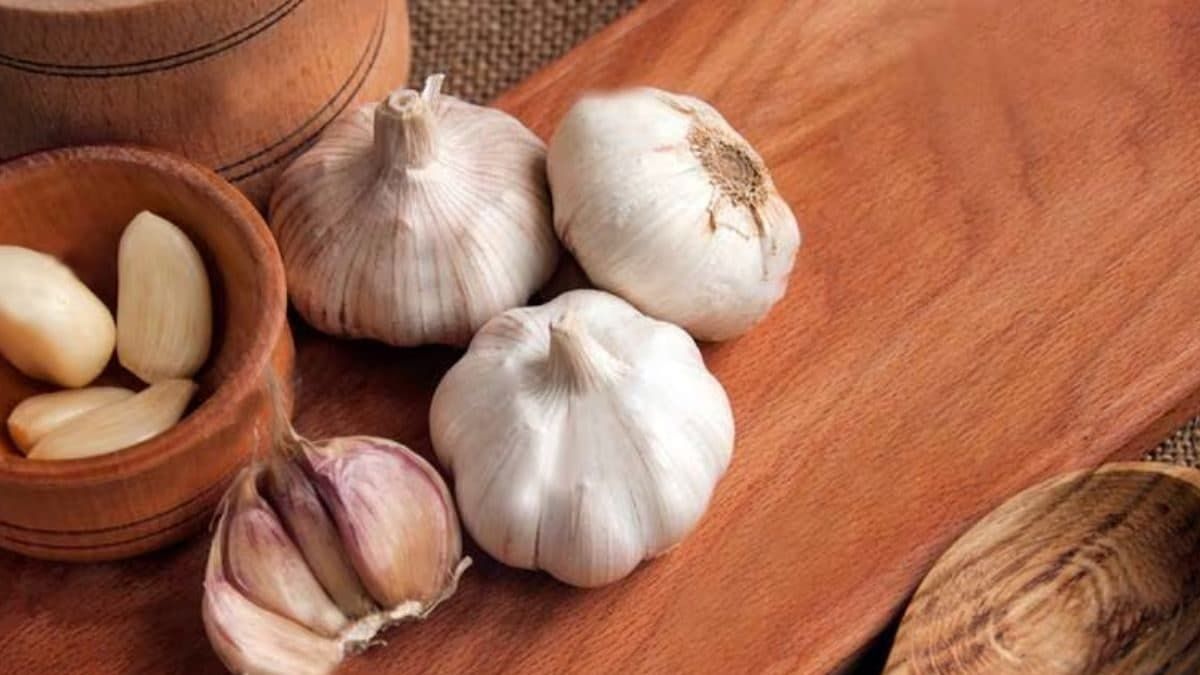Be careful when buying garlic at the market. (Representative image)
India's ban on Chinese garlic is aimed at protecting public health and the livelihoods of Indian farmers.
Garlic is a staple in many cuisines. While Indian garlic is commonly used, Chinese garlic, which is currently banned in India, is less well-known. When purchasing garlic, it is important to inspect it carefully to ensure you are purchasing a high-quality product.
Following the ban in 2014, Chinese garlic has re-entered the Indian market. Traders in Rajkot, Gujarat, reportedly held a day-long protest after several bags of Chinese garlic were discovered at the Gondal Agricultural Produce Market Cooperative (APMC).
Chinese garlic is said to be distinctive in size and fragrance, and is less expensive than locally grown garlic, making it “profitable for smugglers and agents.”
So what exactly is Chinese garlic?
Chinese garlic, as the name suggests, is a variety of garlic that is grown primarily in China and exported to many countries around the world. It typically has smaller bulbs that range in hue from pale white to pink. Chinese garlic is commonly used in Chinese and Asian dishes, including noodles, stir-fries, and soups. Despite its widespread use, Chinese garlic has come under extensive scrutiny and limitations in India.
Why is Chinese garlic banned in India?
Excessive use of pesticides: Chinese garlic is known for its excessive use of pesticides and chemicals during its cultivation. These compounds can endanger the health of consumers. Indian garlic, on the other hand, is grown with the least amount of chemicals and fertilizers, focusing on natural farming practices.
A professor from Jadavpur University, during an interview with The Times Of India, shared that Chinese garlic is treated with a fungicide containing methyl bromide to prevent fungal growth for up to six months. The professor further said that Chinese garlic is bleached using harmful chlorine, a process that kills insects, prevents sprouting and whitens the bulb.
Quality requirements: Chinese garlic often does not meet Indian quality standards. In some cases, Chinese garlic contains harmful chemicals or synthetic components.
Economic Impact: The lower price of Chinese garlic compared to Indian garlic poses a major challenge for local producers. The entry of cheaper Chinese garlic could result in significant financial losses for Indian garlic producers. To uphold the interests of Indian farmers and consumer safety, the government has banned Chinese garlic.
Differences between Indian and Chinese garlic
- Physical appearance: Chinese garlic is smaller and can be bright white or pink in color. Indian garlic, on the other hand, is larger and has hulls that vary in color from white to pink to light brown. The differences in size and shade reflect the different growing environments and procedures.
- Taste and aroma: Indian garlic is known for its pungent smell and strong taste. Because of its strong flavour, it is a popular ingredient in Indian cuisine. Chinese garlic, on the other hand, has a milder aroma and flavour, which may be less suitable for some culinary applications.
- Cultivation Methods: Indian garlic is typically grown using traditional methods, with a focus on natural farming practices and minimal application of chemicals. This method produces a more organic and healthier product. In contrast, Chinese garlic is often produced using modern farming techniques that rely heavily on pesticides and chemicals to improve yield, raising concerns about its safety and impact on health.












